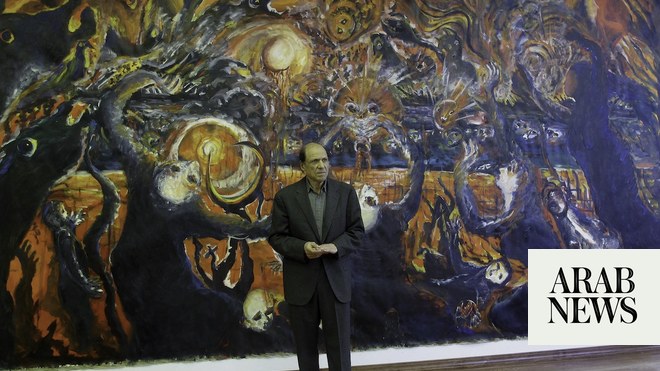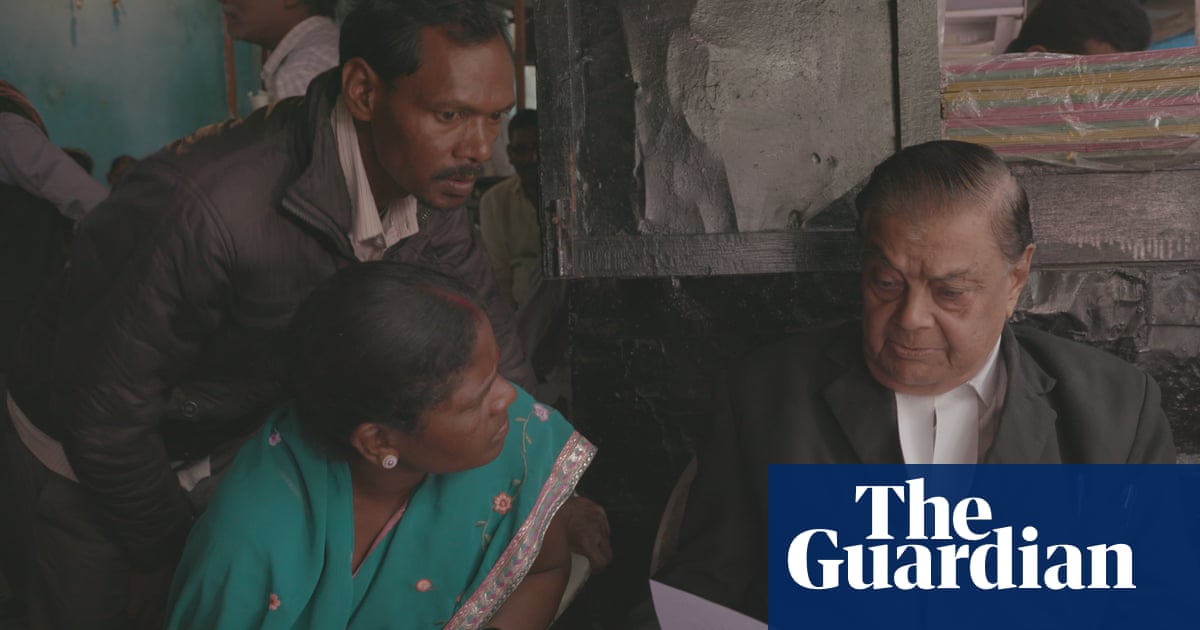
ome documentaries are so vivid, so heartfelt, that you almost feel you’re somehow involved yourself. And for a very interesting reason, this is how I felt watching My Father and Me, the new BBC Two film from the Bafta-winning director Nick Broomfield, whose past work includes Kurt & Courtney, Whitney: Can I Be Me and Aileen: Life and Death of a Serial Killer, the piercingly intimate death-row study of Aileen Wuornos, which inspired the Hollywood feature Monster, starring Charlize Theron.
Broomfield’s new film is, to paraphrase John Mortimer, a voyage round his father, the photographer Maurice Broomfield, who died 10 years ago at the age of 94.
Maurice Broomfield’s beautiful, dreamlike and utterly unique images captured British industry in its postwar heyday. His images have come to be treasured even more now that the factories he shot have largely vanished. Broomfield would take stunningly composed pictures of factory floors, industrial buildings, nuclear cooling towers and production lines, with their smartly alert human attendants picked out with painterly care and detail. He would often curate and even fabricate his images like a cinematographer or production designer on a movie set, with fierce key lighting, and often demanded the entire space was repainted and reorganised to his specifications to create the dramatic effect he wanted – to show the spiritual truth behind the literal truth, perhaps: the dignity of labour and the heroism of industry.
Broomfield’s vision was never entirely fashionable in Britain. You’ve heard of dark satanic mills. These were bright angelic mills. And they were mostly commissioned by the companies themselves, which had an obvious vested interest in making their workplaces look pleasing. But Broomfield’s talent went way beyond PR. He transformed these buildings into cathedrals. Broomfield was Britain’s answer to the dynamic Soviet reportage photographers, whose realism was malleably placed at the service of the state. In their futurist panache, Broomfield’s images even had something of Fritz Lang’s Metropolis about them.
And here’s the thing. My own dad, Albert Desmond Bradshaw, was a photographer and for some years in the 1950s, he worked for Broomfield at his studio – a converted building that Broomfield rented from the socialite Lady (Domini) Crosfield in the grounds of Witanhurst, her gigantic stately home in Highgate, north London. Dad branched out on his own and took pictures in the “industrial photography” style and also streetscape scenes.
When I was growing up, the name “Maurice Broomfield” was spoken with enormous reverence in our house; Leonardo da Vinci’s name could not have been spoken by his assistant Andrea Salaì with more respect. So watching Nick Broomfield’s film about him was occasionally an out-of-body experience for me. When I heard about Maurice being strict with Nick, and being reluctant to let him go into the darkroom and handle camera equipment – they are not toys, after all – I remembered my dad being strict with me. When Nick recalled Maurice being exasperated with his son for being so impractical, so useless at fixing things, I laughed out loud. Exactly what my dad would say to me! And the darkroom was a holy place in our house. My sister and I were never allowed in there. The “darkroom” scene in the classic Ealing comedy Kind Hearts and Coronets was partly why my dad loved that film so much, why he wanted me to watch it — and why I came to love cinema.
Nick Broomfield’s film is about a generational conflict and generational drama. Maurice could be baffled and alienated by the confrontational and apparently anarchic style of Nick’s documentary film-making – and Nick suspected that his father’s pictures were naive and sentimental. Both men evolved away from these views. And yet there could be doubt that each regarded the other as an artist, though when I asked Nick if his dad thought of himself as one, he says that he only really used that term when he took up painting in retirement. “He was an artist,” says Nick. “He had a great flair for creating drama and theatre, and he had this incredible enthusiasm.”
Fascinatingly, Nick shows that his great creative and emotional conflict with his father stemmed from one single photograph that he took as a teenager, with the camera that Maurice had given him. The photo is flashed up on screen, and it is very good: a mordant, poignant picture of a donkey looking impassively at the camera from behind a chain-link fence. You can see how proud the young Nick would have been of this picture and how eager to show it to his dad.
But Maurice hated it. He said that Nick should have found a way to photograph the donkey without the ugly and intrusive fence. Nick, of course, argued that the fence, the fact of the donkey’s cruel captivity, was the whole point. But Maurice felt that this was a miserablist and neurotic insistence – and perhaps Maurice’s artistic instinct to take the donkey out from behind the fence showed that he and Nick were in fact on the same page.
But their differences were plain. Nick recalls how Maurice was uncomfortable with some of his son’s earliest, angriest film-making, particularly his stunning documentary Juvenile Liaison (1976), co-directed with Joan Churchill, which showed Lancashire police’s handling of young offenders. We see that film’s brutal scene, in which a hatchet-faced officer comes on to a housing estate at the invitation of a local woman who has been “belted” by her young son, maybe 10 or 11. This man grabs a fistful of this child’s hair, wrenches his head back, and fiercely demands an apology until the boy bursts blubberingly into tears. Maurice evidently found that almost unwatchably painful, as did I. Perhaps it reminded Maurice of his own working-class background, which he escaped through his own talents and through night school classes in art and photography.
That kind of casual violence would only be inflicted on a working-class boy. Middle-class and upper-middle class parents in Britain would not invite the police to “teach a lesson” to their children like that. There is also a later scene – for which the film became famous – when this same officer takes an errant child into a brutal police cell, and it’s even more disturbing for the painterly way the scene is lit, and the hushed tones in which the officer speaks, as if in church. Could it be that Nick was influenced, just a little, by Maurice’s own compositional techniques there?
My Father and Me is such a riveting study: a portrait of the artist as a younger and older man.












